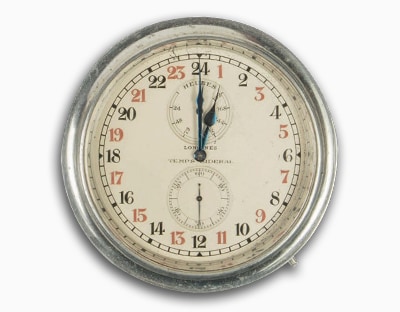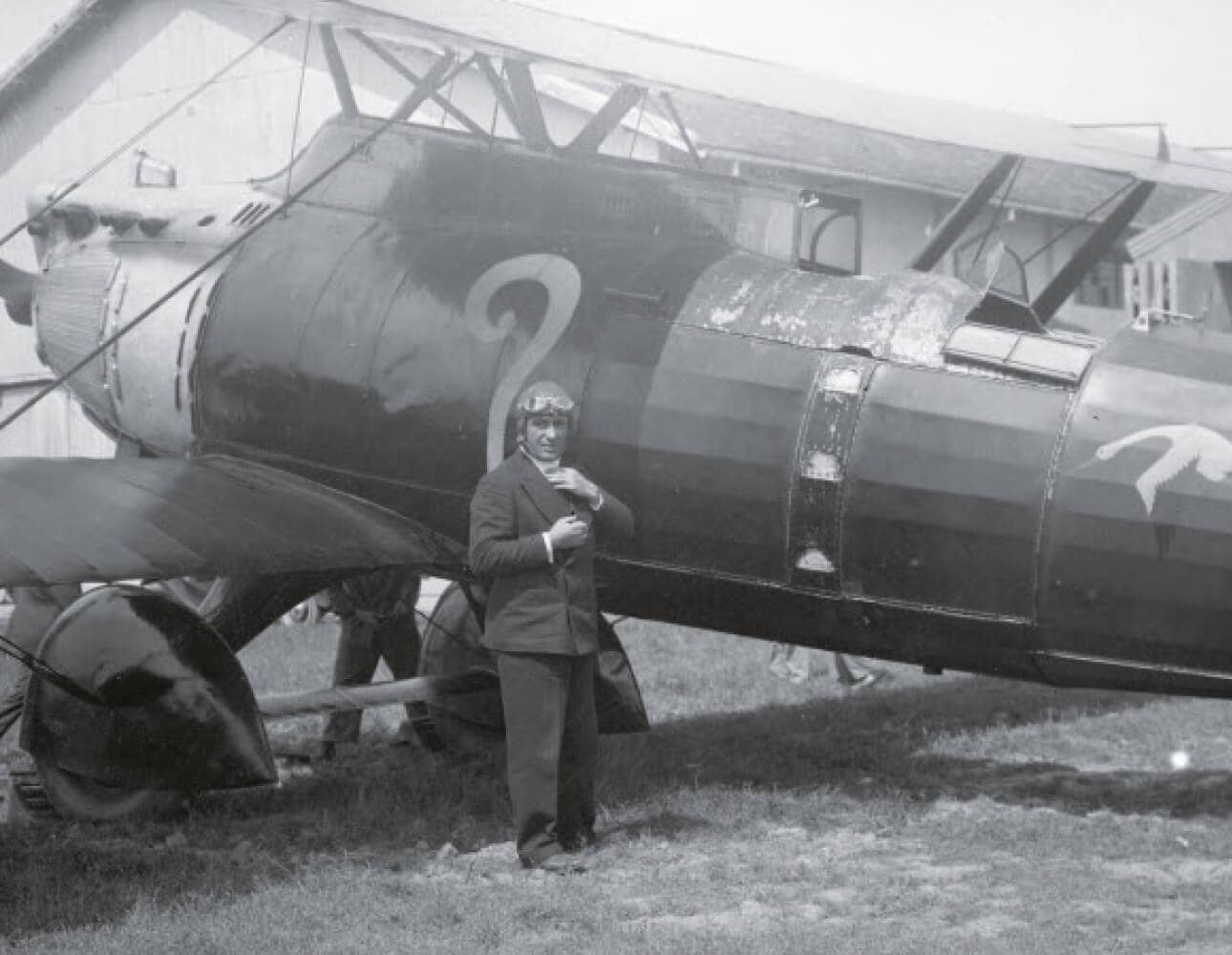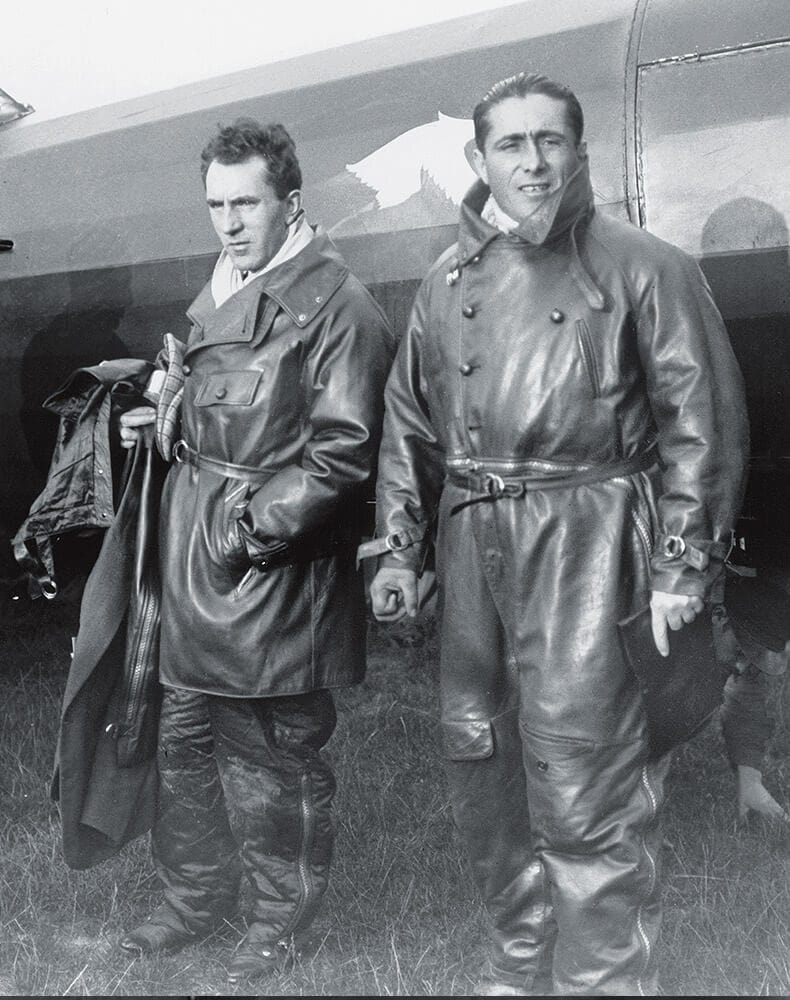

The LONGINES cockpit clock indicating sidereal time, on a 24-hours-dial, with a power reserve of eight days. Costes/Bellonte’s biplane, the Breguet XIX TF, named “Point d’interrogation” (“Question mark”), was equipped with two of these clocks. Maurice Bellonte kept both of them until his death.
Breguet XIX TF “Point d’interrogation”
1929
Together with Maurice Bellonte (1896-1984), Dieudonné Costes clocked in a world record in distance travelled in a straight line with 4,912 miles (7,905 km). Departing from Paris, the French pilots headed east, landing in Tsitzikar, in north-east China, on 29th September 1929. The following year, they successfully made the first ever Paris to New York flight. It was Lindbergh’s flight, but in the opposite direction, which was much more difficult because they were frequently exposed to headwinds. After a journey lasting 37 hours and 18 minutes through day and night, they landed in New York.
Their biplane Breguet XIX TF, named “Point d’interrogation” (“Question mark”), was equipped with two LONGINES board clocks. Maurice Bellonte ordered them at the manufacturer in Saint-Imier and fitted them in the cockpit. LONGINES designed the watches especially for navigation as they measured not civilian time, but sidereal time: a time scale based on the Earth’s rate of rotation measured relative to the fixed stars. A sidereal day lasts 23 hours, 56 minutes and 4 seconds. The LONGINES clocks had a power reserve of eight days, the dials were calibrated to 24 hours (instead of the normal 12 hours).

Dieudonné Costes (right) and Maurice Bellonte on 27th September 1929, before departing from Paris to Tsitzikar (China). With this journey they beat the world record in distance with 4,912 miles (7,905 km).

